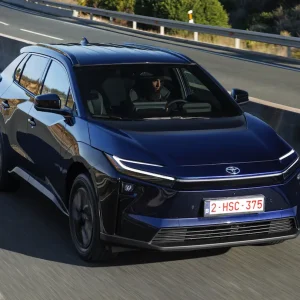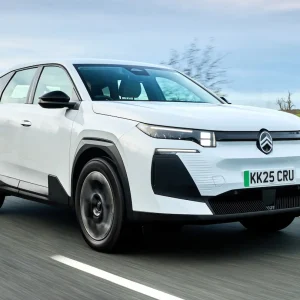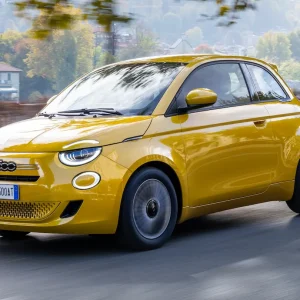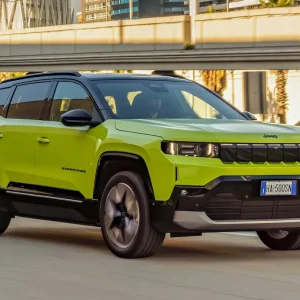The Lexus ES has been around for 30 years, but it’s a new model to us in the UK, where the brand has previously deployed the GS in the executive segment.
The chief distinction from that model is that the ES is front rather than rear-wheel drive. However, the feature that does most to make the new ES stand out from the rest of the market is under the bonnet, where there is only one engine option – a petrol-electric conventional hybrid – in stark contrast to the big German brands, which still focus on diesel, with the occasional toe dipped in the water of plug-in hybrids. Lexus and parent company Toyota have had form with conventional hybrids for a long time, and argue that the cheaper purchase price of a non-plug-in hybrid makes it more attractive than those cars. But can it really stack up against the tried-and-tested diesel competition?
A relaxed drive
The powertrain itself features a 2.5-litre, 178hp petrol engine and a 122hp electric motor. Combined, these produce a maximum of 218hp, enough to shift the ES along well enough, although with a 0-62mph time of 8.9 seconds it is no rocketship.

The ES is at its best as a motorway cruiser, where the driving experience is serene. Ride comfort is very impressive, with surface imperfections absorbed easily, adding to the comfort derived from the well-cushioned seats. At a cruise the engine is also very quiet, with the cabin generally well soundproofed. Making mile-munching an even easier experience is the radar-guided cruise control fitted as standard, which smoothly adjusts your speed to match the vehicle in front as you catch it, then promptly recognises when you pull out to overtake and eases you up to speed again.
In contrast to the motorway experience, B-roads are not the ES’s forte when specced in the range-topping Takumi equipment grade tested here. The soft chassis set-up makes it difficult to string together bends confidently – F Sport grade with its adaptive suspension is a better option for this type of work, although it is still not exactly thrilling. Also, when accelerating out of corners or up a hill the engine gets noisy, with the CVT gearbox sending revs soaring. Around town the engine quietens down again and things are far more refined, especially with spells of pure electric running, while slow speed manoeuvring is simple thanks to forward and rear-facing cameras and a 360-degree around view monitor (all standard with this spec).
Premium cabin
The interior is a luxurious place to sit, with the aforementioned seats (also heated and air conditioned) combining with plenty of leather trim to create a high-quality feel. A striking feature is the 12.3in extra-wide touchscreen Takumi cars get; however, a quibble with this is that it is so wide it is difficult for the driver to reach icons on the other side of the screen, meaning the touchpad control, which isn’t the most intuitive to use, has to be relied upon. The font is also a bit small, making it difficult to read at a glance. The driver does, however, benefit from a head-up display with this spec, which shows information including speed, the current speed limit and sat-nav instructions.

Rear seat passengers should be happy, as there is decent headroom and a huge amount of legroom.
Less impressive is the boot, which at 454 litres is a decent chunk smaller than the BMW 5 Series and Audi A6 (530 litres) and the Mercedes-Benz E-Class (540).
CO2 savings
Turning to running costs, the ES’s undoubted strength is its CO2 emissions. Its official figure of 103g/km is well ahead of the equivalent diesel German cars, and when the 4% diesel BIK surcharge is taken into account as well this means a big driver tax saving with the Lexus. It also has the advantage on fuel, with similar official consumption across the board giving it the edge with petrol cheaper than diesel. But the cost sheet for the ES isn’t all good reading. Predicted residual values are disappointing – especially so for the Takumi, which has the worst in the range. It is well behind the German competition – by nearly 9% in the case of the 5 Series – meaning it also loses out in overall cost-per-mile calculations.
If a driver’s top priorities are motorway comfort and low CO2 – as they surely will be for many business users – they may find the ES worth a look. But others, including residual-minded managers, may find it tough to favour over the competition.
P11D: £45,460
Cost per mile: 64.63p
Fuel consumption: 62.8mpg
CO2 (BIK band): 103g/km (21%)
BIK 20/40% a month: £159/£318
Boot space: 454 litres
Engine size/power: 2,487cc/178hp plus 122hp electric motor





